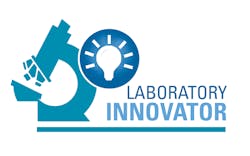Keeping lab employees safe during the COVID-19 pandemic
As Sentara Healthcare confronted the COVID-19 pandemic early in 2020, what was the biggest threat to safety in the lab and how did you address it?
In several blog posts on your website, you discuss the hierarchy of safety controls. Will you briefly describe what they are and how to apply them during the pandemic?
The Hierarchy of Controls has been in use in many industries in the United States since the 1950s, and it describes a stepwise process of keeping people safe from hazards at work.
Engineering controls are typically the first and best controls used in labs. They work by physically separating the hazard from the person. Good examples in the lab include biological safety cabinets (BSCs) and safety shields. Administrative controls are next on the hierarchy. But these are operating procedures, and because they rely on human behavior, they tend to be less effective. The least effective of the Hierarchy of Controls is personal protective equipment (PPE). Even though it is necessary in the lab setting, PPE is considered a last resort for protecting people from the hazards they may encounter.
When lab staff members handle specimens from COVID-19 patients or perform testing, the use of engineering controls is critical. The use of BSCs or splash shields protects staff from potential splashes or aerosols that may be created during the testing steps. Keeping staff at a safe distance from each other while working or while in break rooms also is necessary and effective. In some smaller labs, co-workers may need to work closely, so wearing face masks and face protection is necessary.
What are the key lessons you learned during the first wave of the pandemic and how have you applied them at Sentara to be prepared for subsequent waves?
One key lesson learned during the pandemic is that safety plays a key role when new testing must be implemented rapidly. The U.S Food and Drug Administration cleared many COVID-19 analyzers and tests quickly, so labs were under pressure to implement the new testing as soon as possible. In some cases, new testing space had to be acquired, and many safety issues (adequate space, ventilation, storage, etc.) needed to be considered.
While the usual risk assessments required by the Occupational Health and Safety Administration (OSHA) were already in place, Sentara Lab Services implemented a new, more comprehensive risk assessment that can be used to review the safety of any new process or testing in the department. The new risk assessment tool includes a way to rate each procedural step to see what safety issues could be present and how likely they would be to occur. Once rated, each procedural step is reviewed, so that controls can be put in place to mitigate the hazards employees might face during testing. Once this is complete, a general safety audit of the area is performed as well.
Going forward, this new tool will be valuable for any new process introduced in the lab, and it can be used to close the loop on any safety gaps that may present harm to employees.
Sentara decided to switch from disposable lab coats to reusable ones. Will you describe why your organization made this decision and the process you went through to source the new coats?
Sentara’s labs had been long-time users of disposable lab coats in most locations. Shortly after the pandemic began, we were notified by our supplier that at some point in the year, the company would run out of the material needed to make the disposable coats we were using, and the prices would rise exponentially as the year progressed. We had already learned that owning or renting reusable coats is ultimately cheaper and better for the environment, but the supply shortage helped us quickly decide to convert to reusables.
We researched vendors that would supply lab coats meeting OSHA standards. We then had to find a linen rental and laundry service that could support all of our lab locations. Once we signed a contract with a local rental company and placed an order for the approved coats, we began to implement the process at each lab location. While this sounds easy, there were many steps involved. Ordering the coats took several months since so many requests for lab coats were pouring in from all over the country.
What role do you think staff shortages play in lab safety and how should lab managers address this issue?
The coronavirus does create a threat to staffing in the laboratory. Lab vacancies across the country are already high, and infected or exposed staff members are kept out of work for long periods of time. Some employee exposures can take out multiple staff members, making it very difficult for the work of the department to continue.


